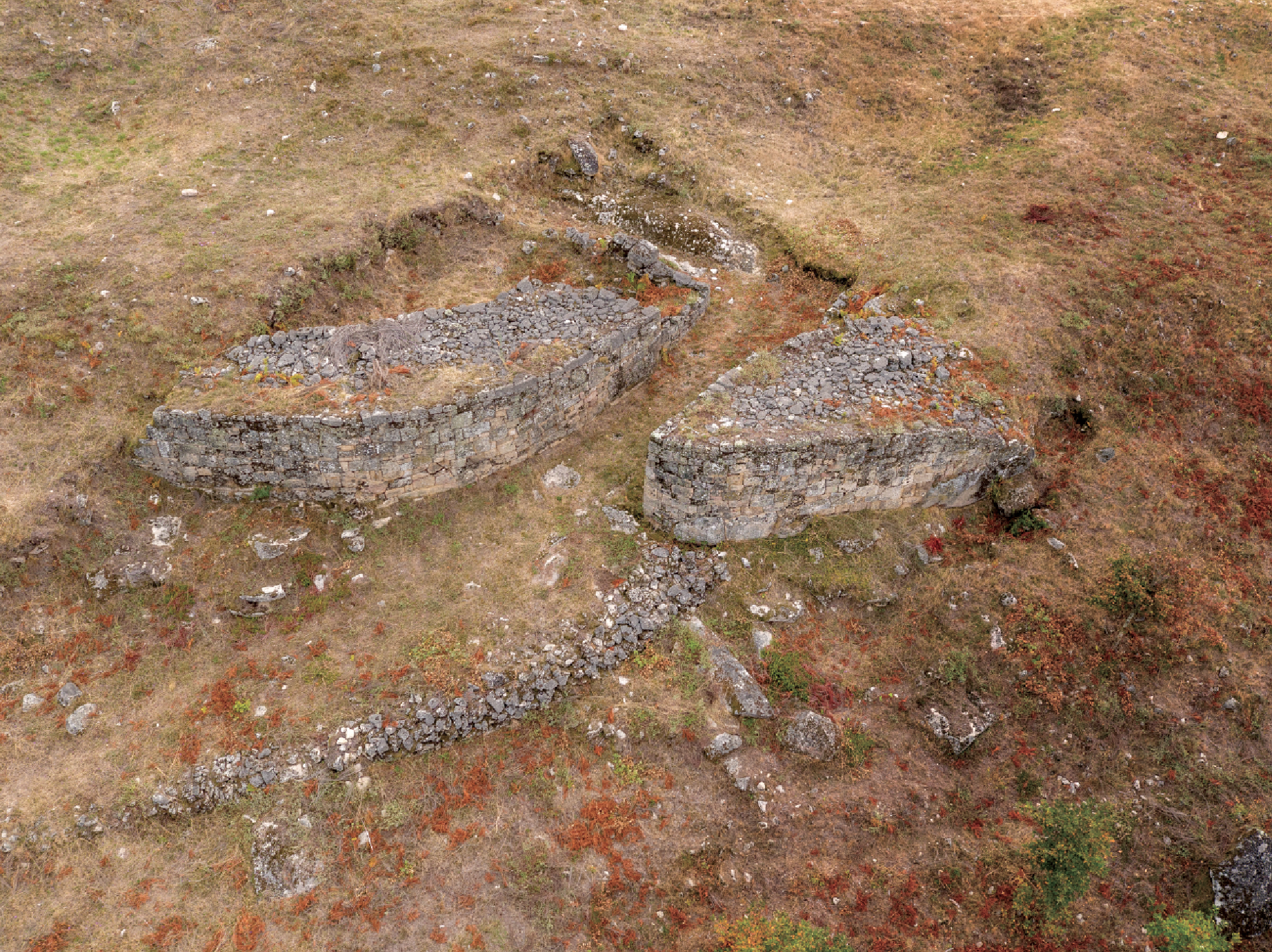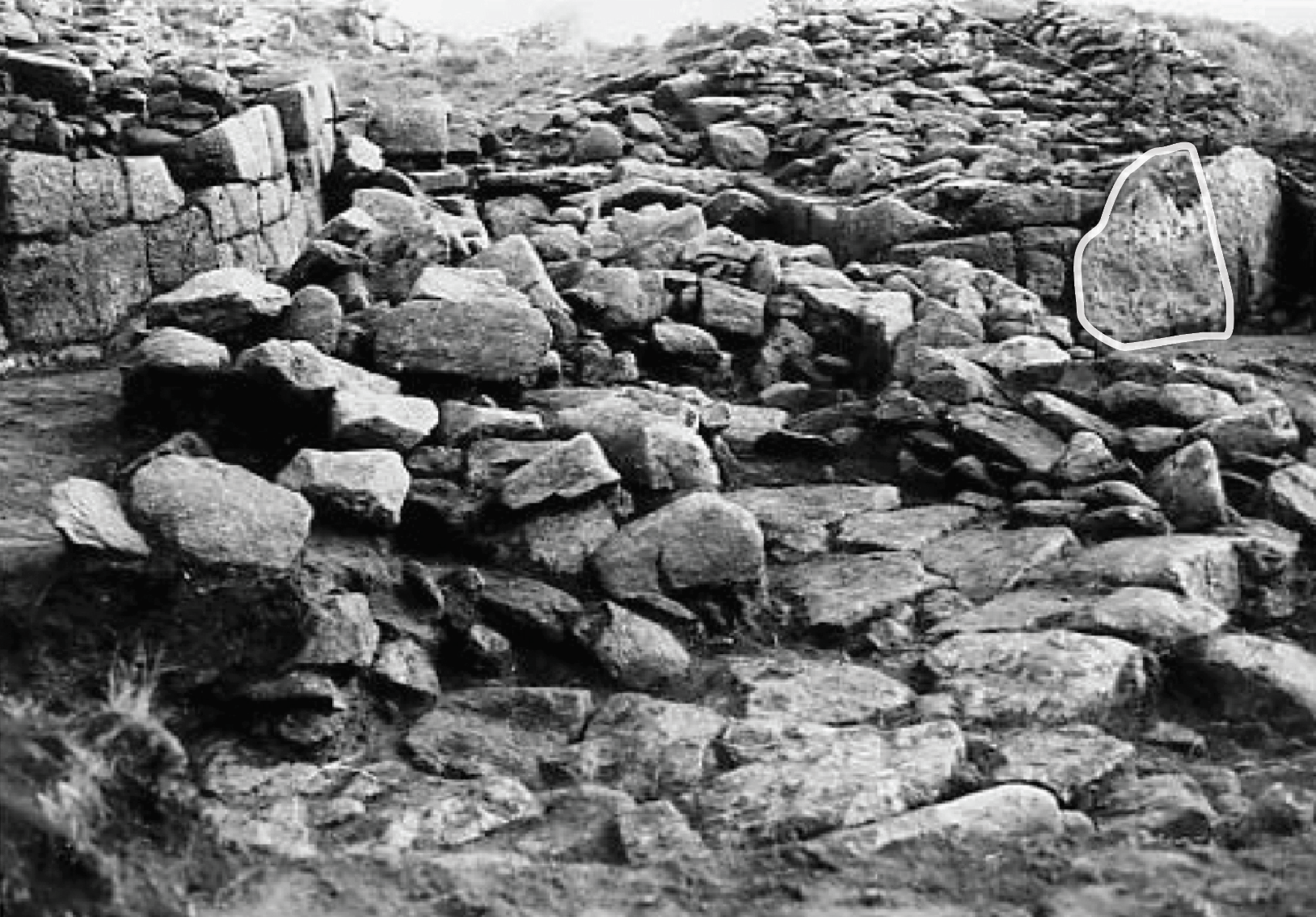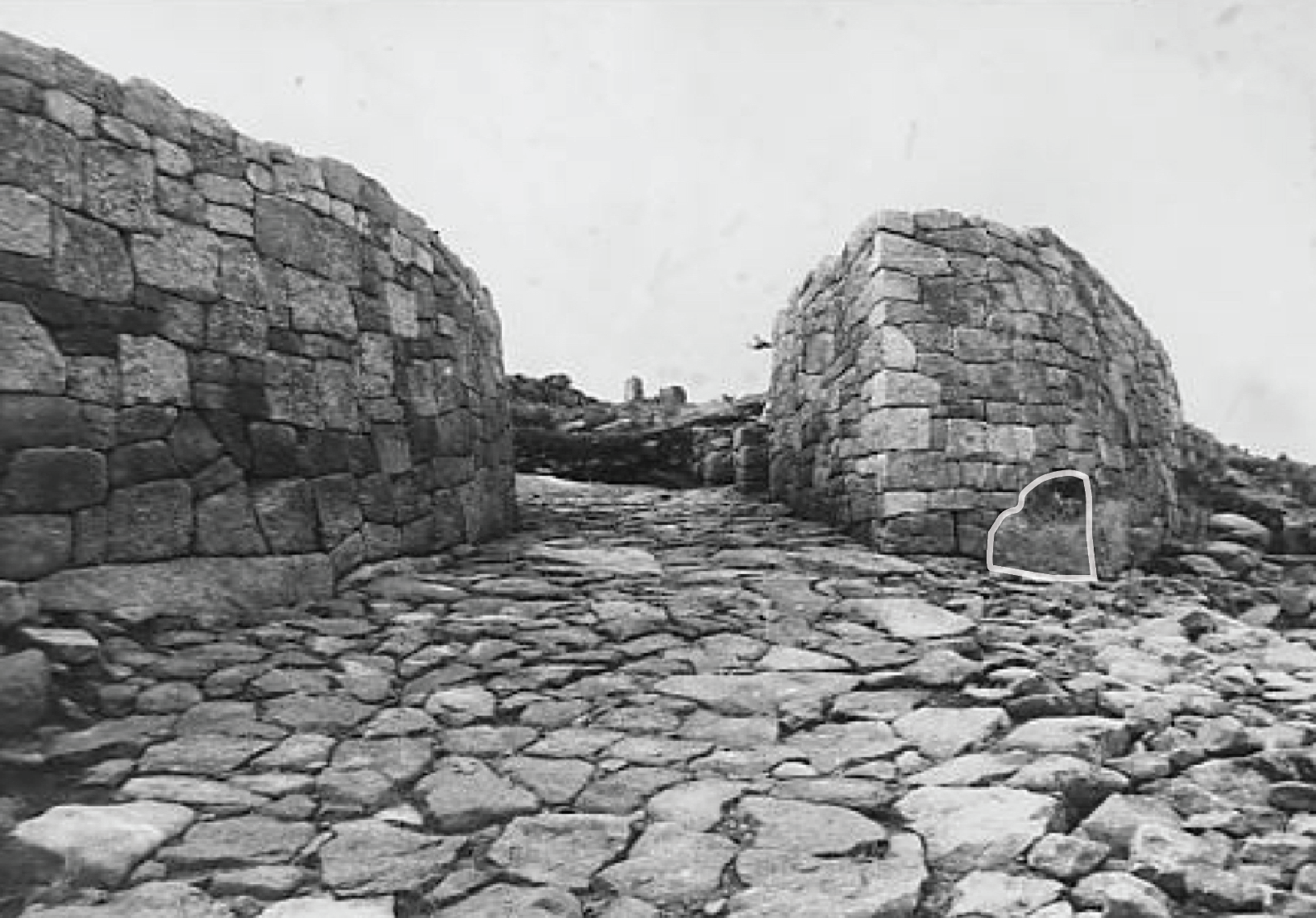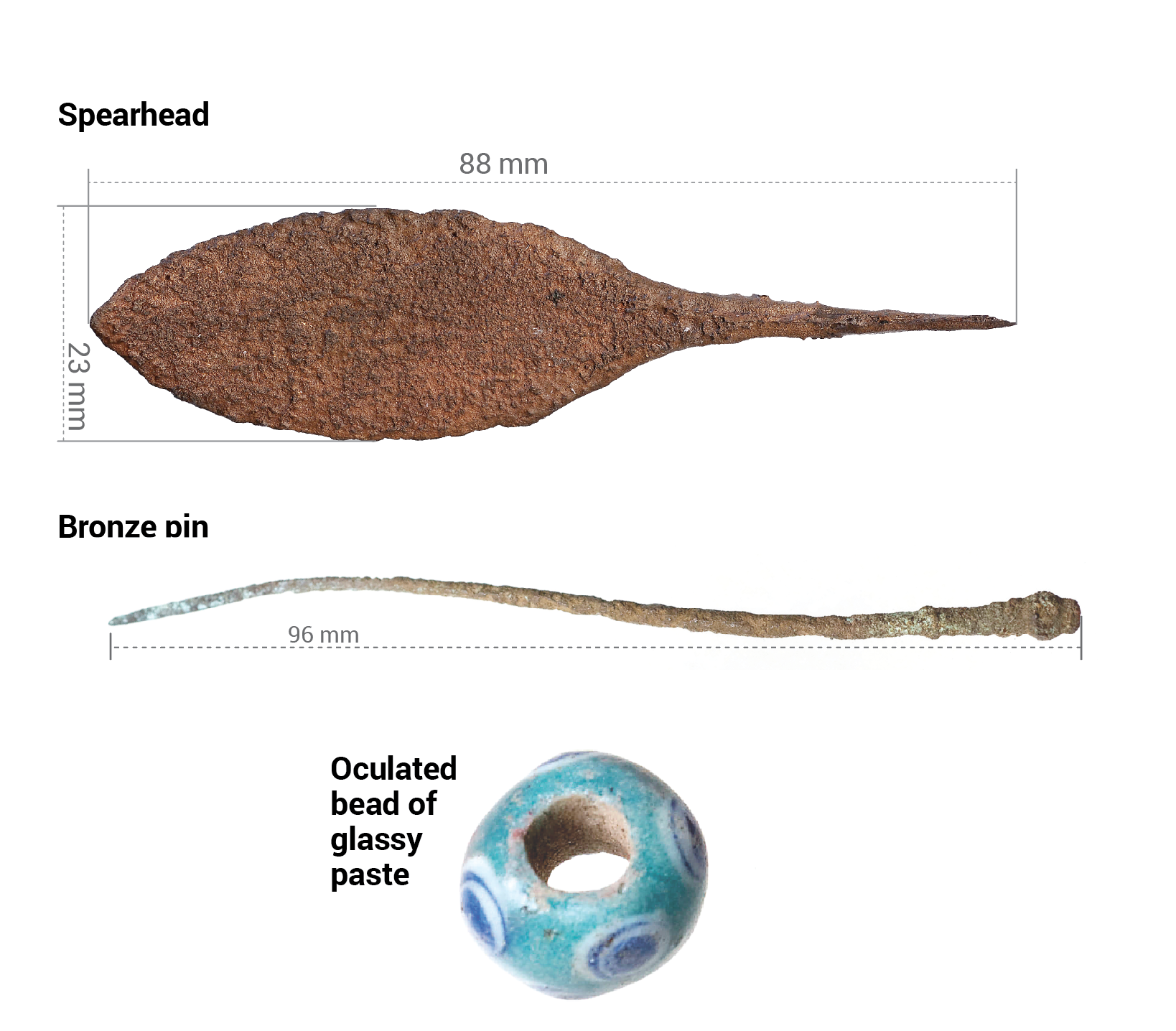The North gate
Of the three doors that A Cida da Saceda has, the one located in the northwest section is the most monumental, as it is flanked by two towers in the shape of a ship's bow. One of them appears protected by a rectangular section located on the inner side of the wall. This type of access, known as clavicle or oblique doors, allow access to the interior of the enclosure indirectly, which allowed the fort to strengthen its defences from the inside. The gate has a firm paved roadway that penetrates the site. This walled space is the largest of the three within Castro da Saceda. Outside this wall petrified huts and remains of tile were also documented, which shows that around them existed a Romanized village or Vicus that lacked strong defences. The monumental size of the gates of the settlements served a double purpose: to hinder the violent access to the town and to magnify its entrance, offering an image to the exterior of vigour and strength of the community that inhabited it.
Remains found
In the area surrounding this gate there were found multiple ceramic remains, of vitreous and metallic paste, some of them coming, no doubt, from the upper enclosures, from where they settled due to gravity and the drag of the rainwater. A special mention must be given to a spearhead dateable to the Bronze Age (2,000 BC) that formed the metal end of a wooden spear, which makes it the oldest piece of metal documented in the settlement. The iron and bronze utensils represent 95% of the total metallic pieces found at the site. Among the materials exhumed in the campaign of 1982 we can find: • An oculated bead of glassy paste of Punic origin (Carthage, Africa) that was part of an ornamental necklace. • A datable bronze pin dating to the I and II centuries AD that evidences the need to fix the social position of the individual, in this case, a woman, within the community. Practically all of these materials have a chronology close to the change of period (year 0), so this metal tip is a notable exception from the chronological point of view.





